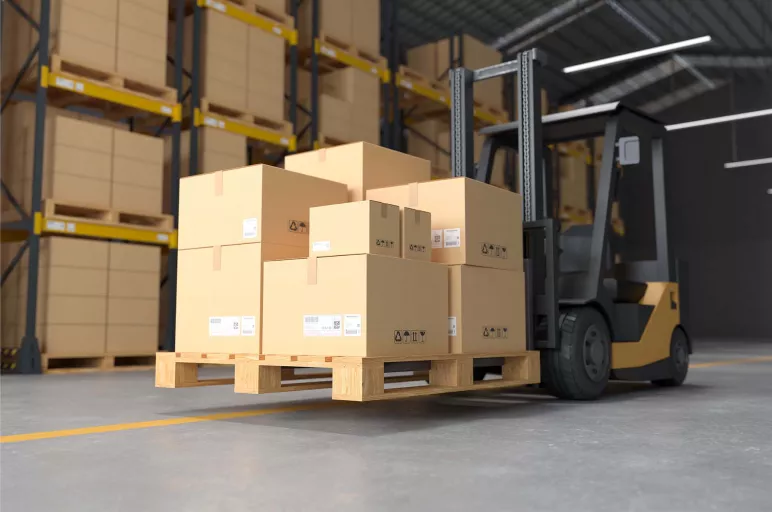
Investing in Next-Gen Fulfillment Strategies and Operating Models
- Changing consumer requirements have necessitated a change in supply chain fulfillment models and technology.
- Legacy fulfillment systems are no longer capable of meeting rapidly changing demand.
- Innovative tools and approaches are key to designing and implementing new fulfillment models.
September 16, 2022 | Supply Chain Strategy 4 minutes read
Most consumers today shop on ecommerce websites, social platforms and mobile apps. And when they shop on these platforms, they look forward to ease of buying, easy returns and similar other conveniences.
This means that there is cut-throat competition among businesses. Also, there is hardly any margin for error.
Additionally, consumer buying patterns have evolved quickly over a short period, especially after the onset of the pandemic.
What does all this mean for businesses?
One, they must be omnipresent and meet consumers where they are.
Secondly, they must carefully review and redefine their fulfillment strategies and operating models.
In fact, fulfillment strategies can today distinguish a business that thrives in the new normal from others that struggle to meet customer expectations.
Here are some of the key capabilities that businesses must develop to succeed in this initiative.
1. Omnichannel Fulfillment
A top priority for businesses today is to have an omnichannel fulfillment strategy that can provide customers a unified experience across multiple touchpoints – online and offline.
This helps a business manage inventory and order processing via a variety of sales channels, including both forward and reverse flows as well as physical and digital channels.
Fulfillment via multiple channels requires efficient coordination between different functions.
Leading U.S. retailers such as Walmart and Target have adopted omnichannel fulfillment strategies to meet changing demand. And other B2B operators – such as Caterpillar and Land Rover – have also adopted omnichannel despite their target customers being non-retail, wholesale operators.
These services include curbside pickup, buy online pick-up in store (BOPIS), assembly, product verification and repair. In addition, Walmart has also launched Express Delivery to deliver online orders in less than two hours.
2. Microfulfillment Centers
Ever since the pandemic hit in early 2020, retailers have seen a significant jump in their ecommerce and online sales. Many of them found their existing capacities were insufficient to meet the increased demand.
As a result, they looked to convert extra spaces and even a part of their stores into microfulfillment centers. These facilities are strategically located in densely populated urban areas closer to the end-user. They not only help expedite last mile delivery but also lower transportation and other overhead costs.
Leading retailers such as Kroger have adopted this strategy and opened several such facilities in recent times.
3. Distribution as a Service
Faster delivery has become a key agenda for businesses. As a result, the roles of third-party logistics (3PL) and fourth-party logistics (4PL) are quickly evolving in the new normal.
Companies are increasingly partnering with 3PL service providers, some of whom are now leveraging a ‘distribution as a service’ model to make better use of their excess warehouse space.
For example, with the launch of GoLocal, Walmart plans to extend its local delivery expertise to businesses of all sizes. The Home Depot has partnered with Walmart GoLocal to provide same-day or next-day delivery on a variety of home improvement products.
4. Warehouse Automation
Sophisticated and large-scale warehouse automation is a key indicator of how fulfillment has evolved over the past decade. Smart automation combines intelligence with automation to streamline inventory and warehouse management processes such as forecasting, planning, optimization and exception management.
Extensive automation has helped redesign the traditional warehouse into a multi-floor dynamic fulfillment center that features automated mobile robots (AMR) with onboard intelligence systems.
Such systems allow them to learn their surroundings by having a blueprint uploaded or by driving around and developing their own map. Likewise, automated carts operate alongside human workers and are designed to lead or follow them around.
Time to Boost Fulfillment Capabilities with Technology
To keep up with the rapidly evolving business landscape and effectively meet consumer demand, enterprises must redefine their fulfillment strategies and invest in advanced technology and tools.
In many warehouses, for example, workers are now equipped with radio frequency identification (RFID) scanners to get real-time visibility of stock availability.
These scanners are linked with the warehouse management system to show the exact location of a product. Warehouse management systems now routinely come with efficiency tools such as directed put-away and embedded cycle counting, all to drive more outbound order lines processed with the same labor.
Additionally, robotics and automation have evolved to be must-have tools for businesses. These technologies help calculate sizes and fill shipping boxes with the exact amount of product needed in a store, thereby improving efficiencies.




